By Louise Irvine
In the years following World War I, pottery became a popular means of self-expression for many sculptors. Clay casting was inexpensive compared to bronze, and ceramic figures were affordable and decorative. They could also be brightly colored, which was appreciated during the Roaring Twenties. Several talented artists formed creative partnerships with friends and family and established successful modeling studios in London.
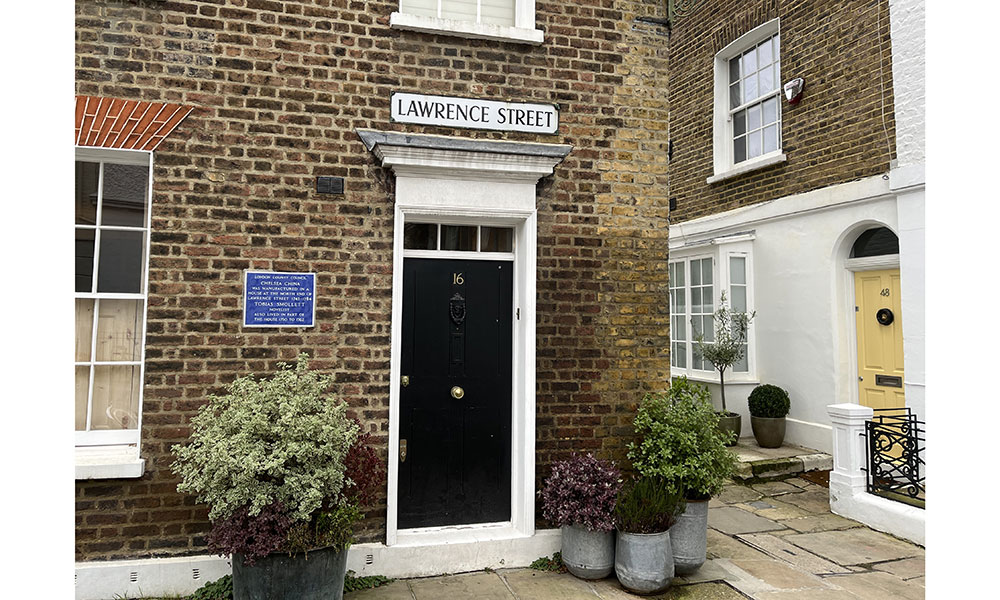
Chelsea China Lawrence Street
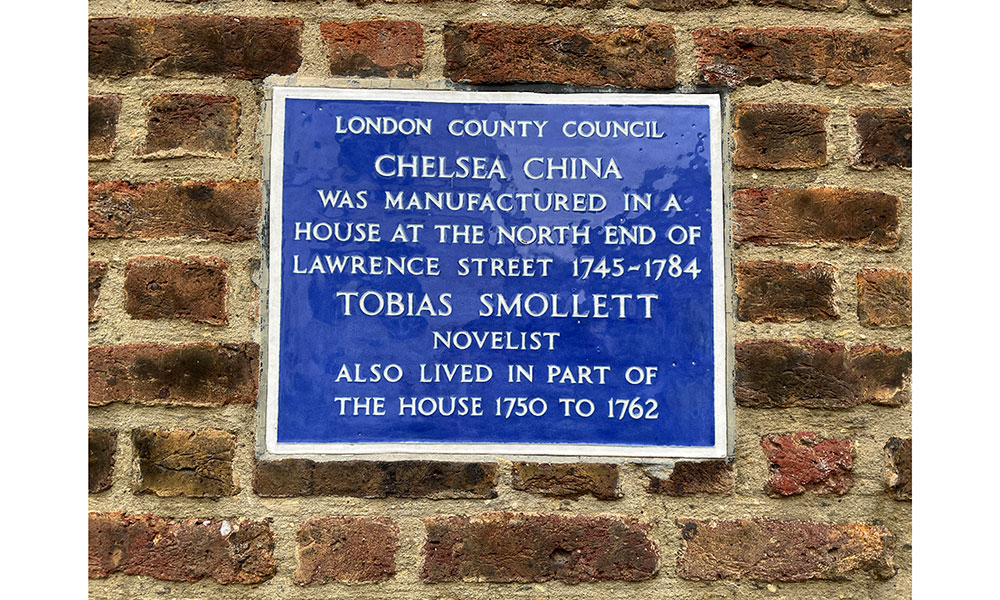
Chelsea China Blue Plaque
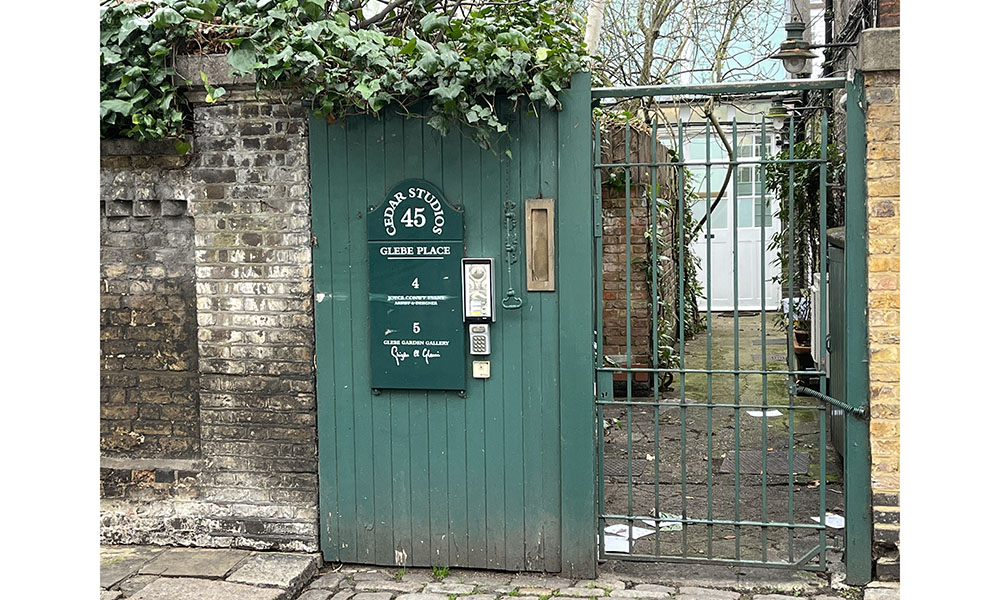
Cedar Studios Conrad Dressler
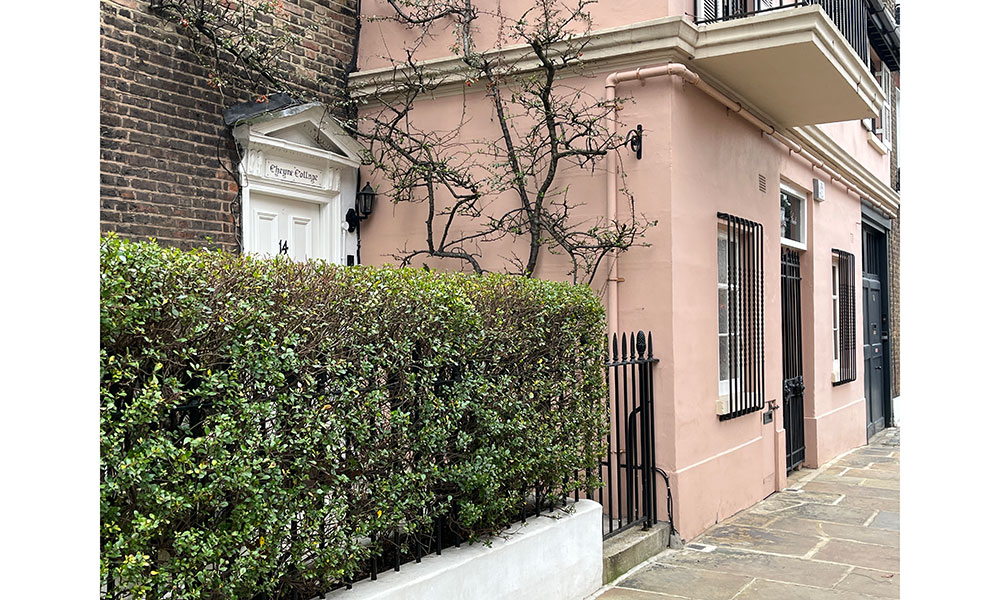
Charles Vyse Studio
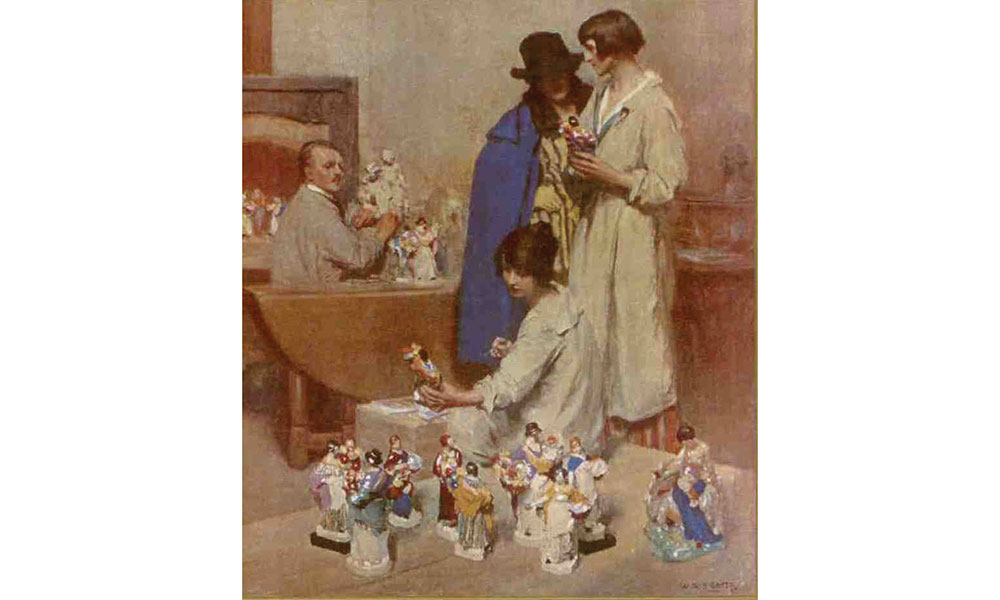
Vyse Studio by W. R. S. Stott
Chelsea Potters
Many studio potters gravitated to the Chelsea area in London, which had long been a center of artistic life in the capital. Chelsea was the location of the first major English porcelain factory in the 18th century, which specialized in figurines. A blue commemorative plaque can be seen at the original location in Lawrence Street. In the 1770s, Cheyne Row in Chelsea was the site of Josiah Wedgwood’s London decorating studio.
In the 1880s, the sculptor Conrad Dressler built Cedar Studios before becoming involved with the Della Robbia Pottery in Birkenhead and later with his Medmenham Pottery, producing tiles and architectural ceramics. Dressler’s early ceramic work was fired by the famous Victorian artist-potter William De Morgan, who lived and worked in Chelsea during the 1870s. Colorful ceramic plaques by Chelsea potters can still be seen on buildings in the area.
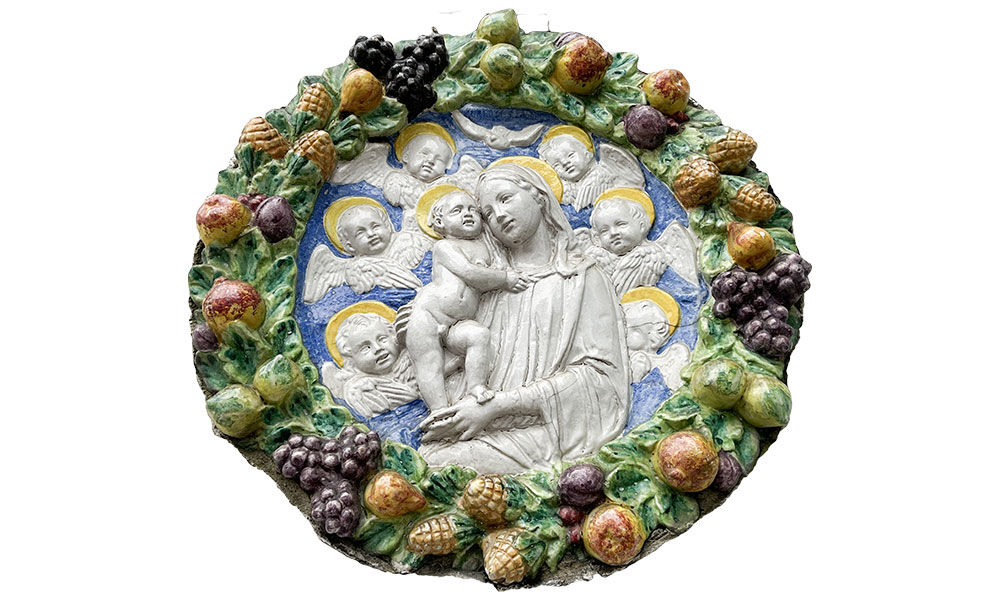
Chelsea Madonna
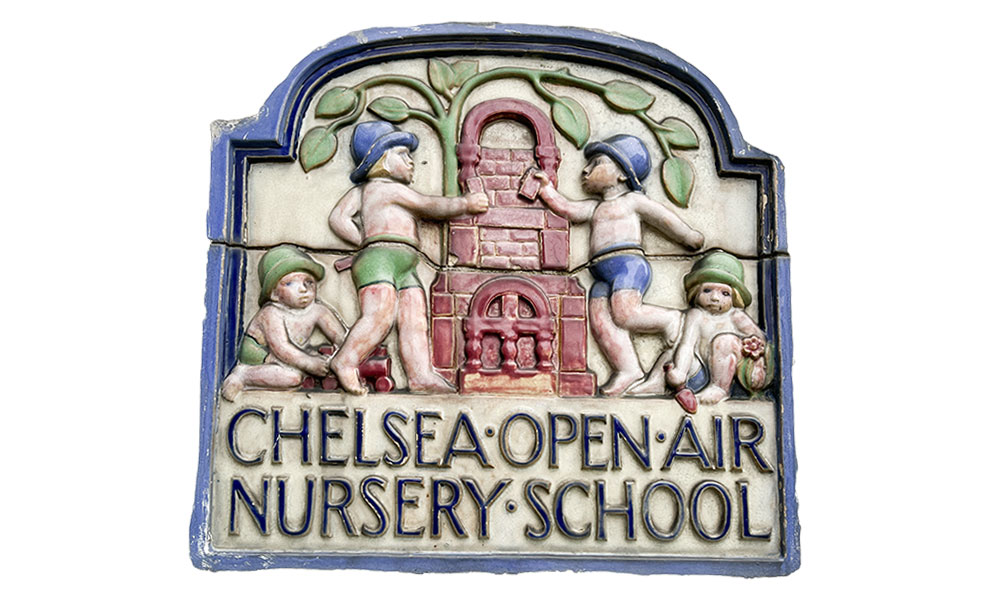
Chelsea Nursery School
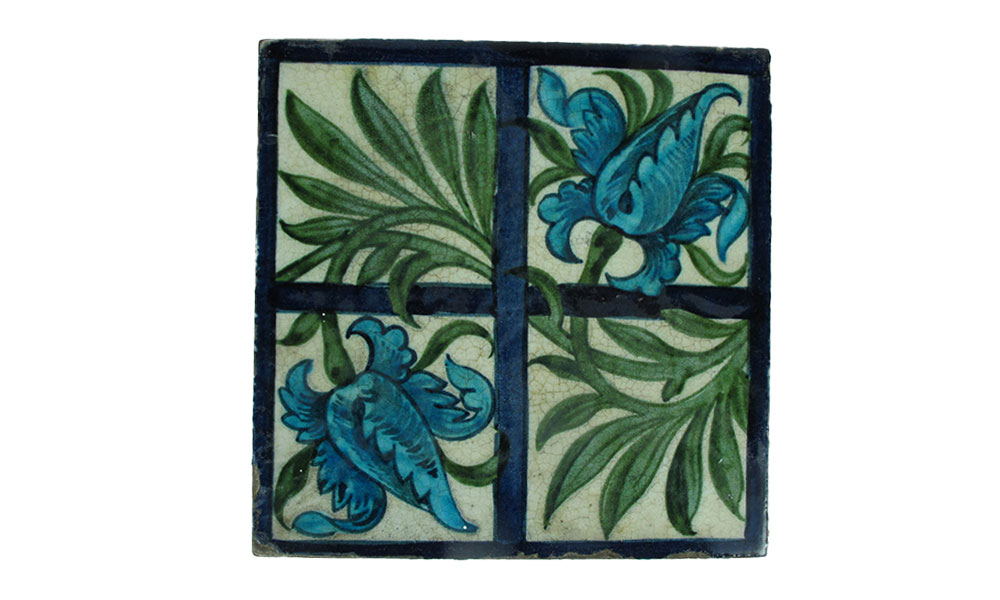
William De Morgan Tile
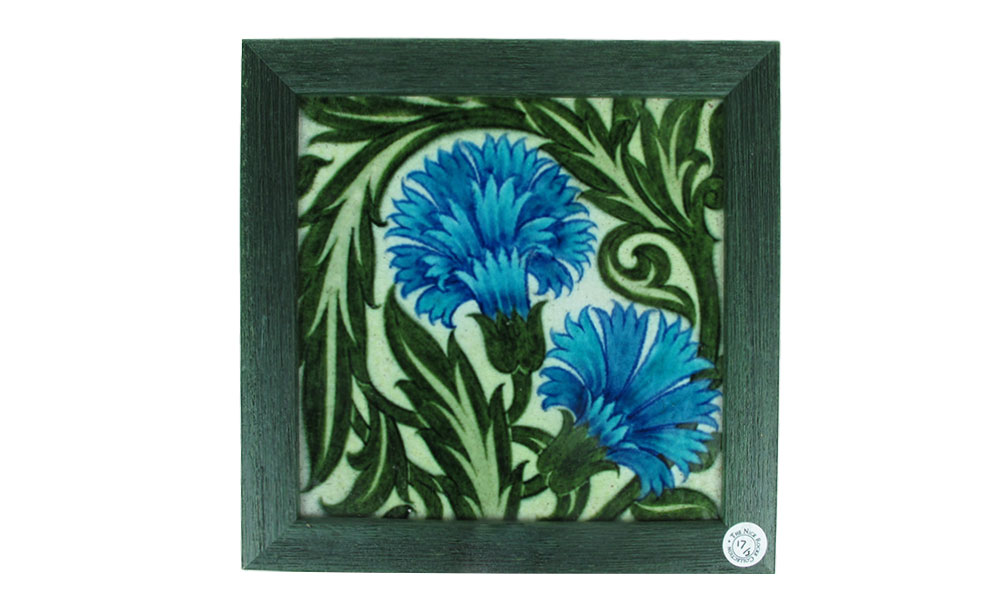
William De Morgan Tile
The Staffordshire-born sculptor, Harry Parr, initially shared a studio with Dressler before moving to his own studio, where he made small editions of ceramic figures such as the whimsical Boy on a Turkey at WMODA. He was a contemporary and neighbor of fellow Staffordshire potter Charles Vyse and they became longtime rivals.
One of the pioneering studio potters in the early 1900s was Reginald Wells who studied sculpture at the Royal College of Art and pottery at Camberwell School of Art. After setting up a studio pottery in Kent, he moved to Chelsea in 1909 where he became known for his hand-thrown pottery with textured glazes and robust stoneware figures inspired by his bronze sculptures.
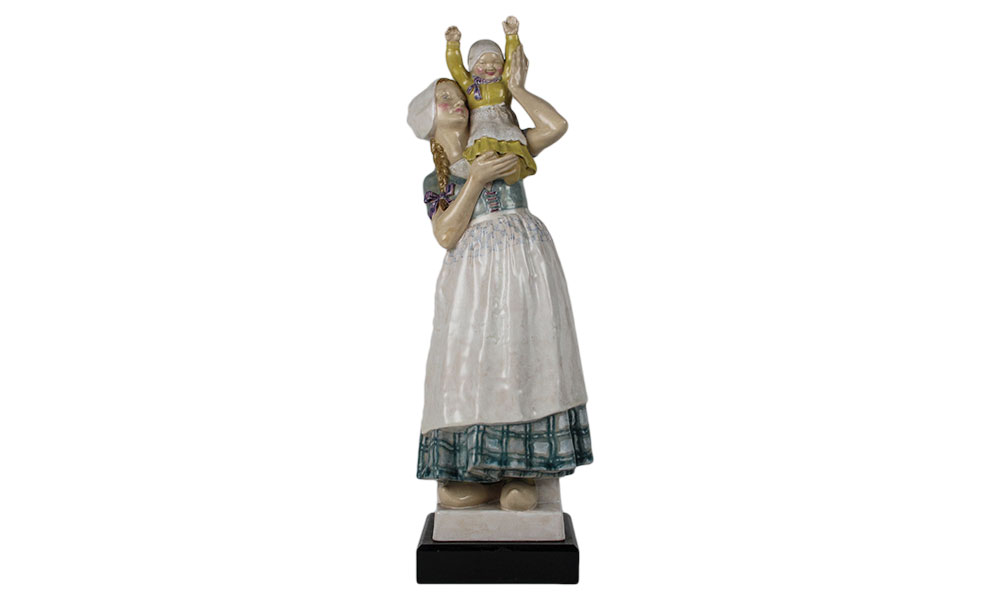
Motherhood by H. Parr
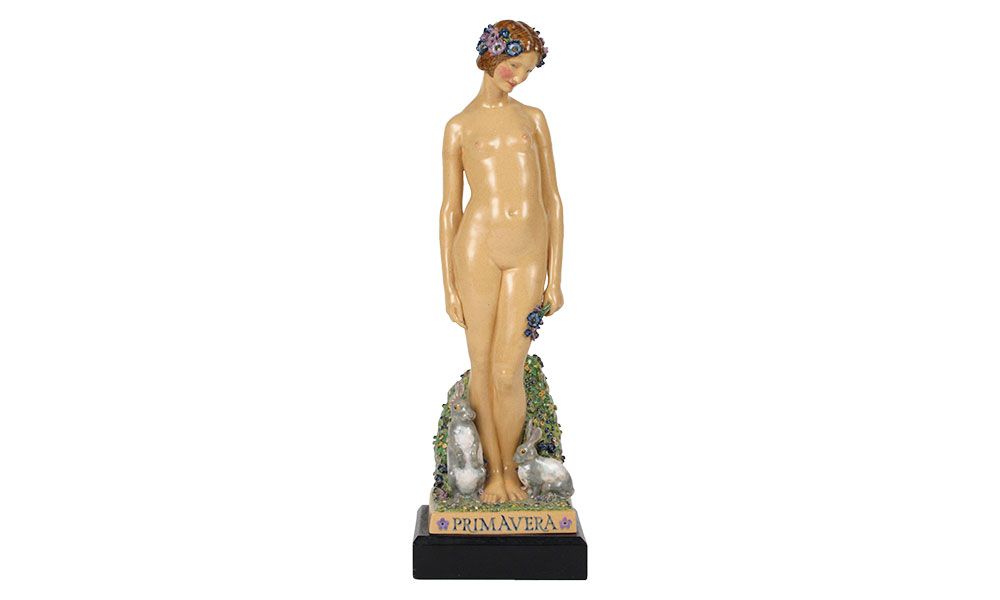
Primavera by H. Parr
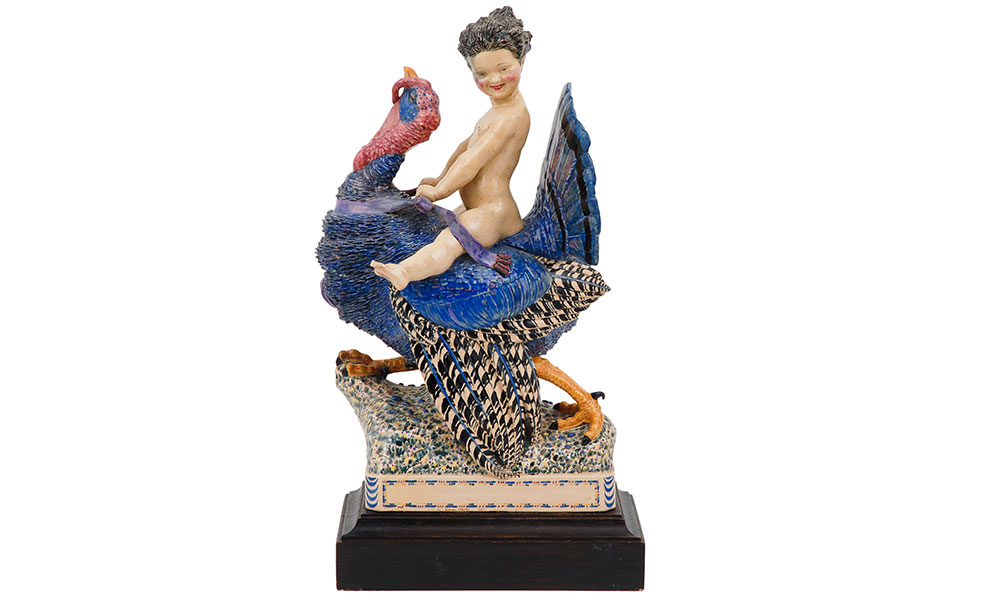
Boy on a Turkey by H. Parr
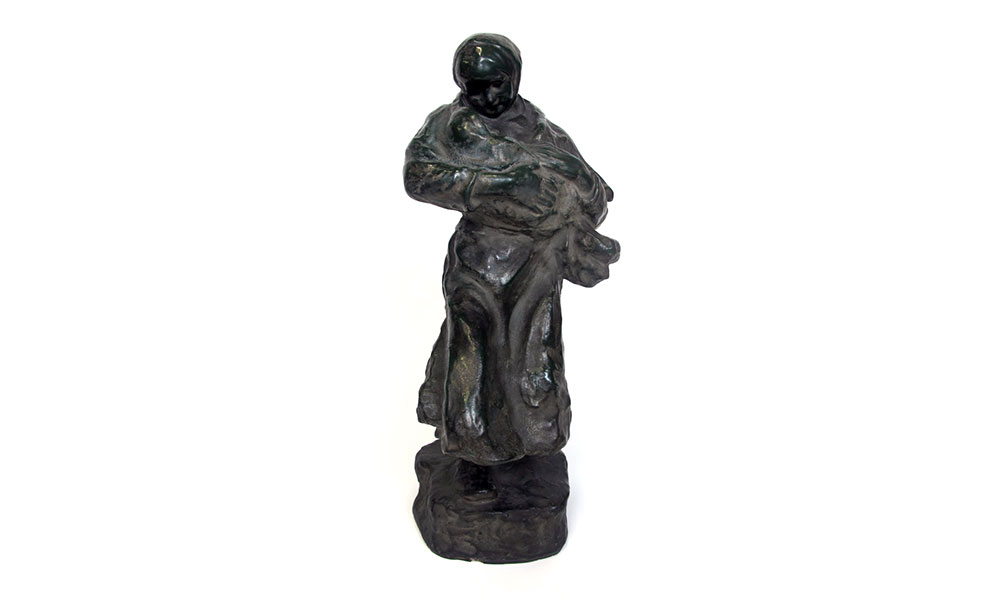
Motherhood by R.F. Wells
Gwendolen Parnell was an influential female potter in the community. She set up her Chelsea Cheyne Pottery in a converted chapel in Paradise Walk, which was far removed from paradise in the early 20th century! Miss Parnell achieved recognition when she sold one of her first porcelain figures to Queen Mary in 1916. In 1924, she formed the Guild of Potters to promote clay as a means of artistic expression and her success inspired other young women to make pottery figures.
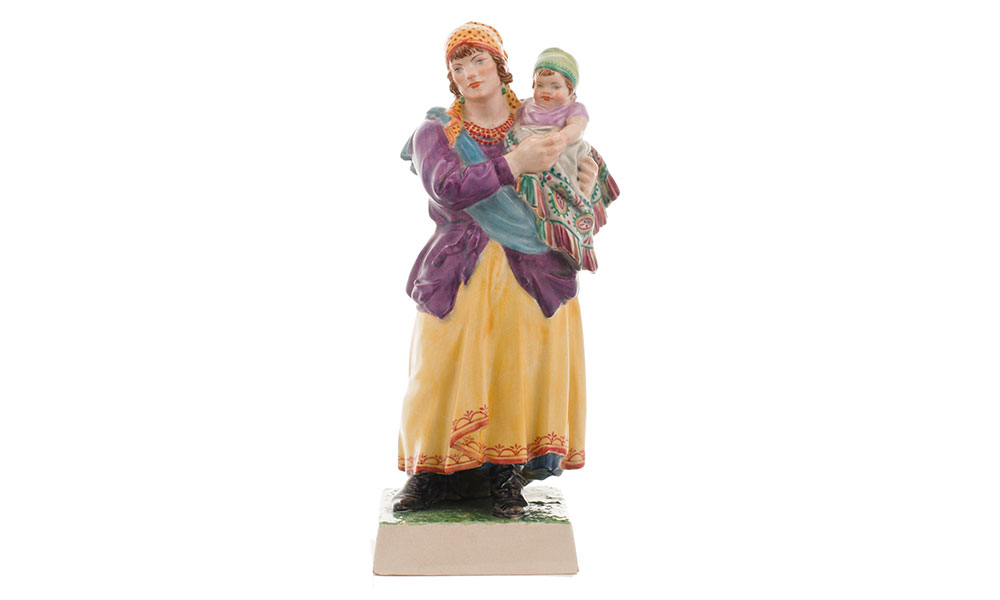
Madonna of the Racecourse by C. Vyse
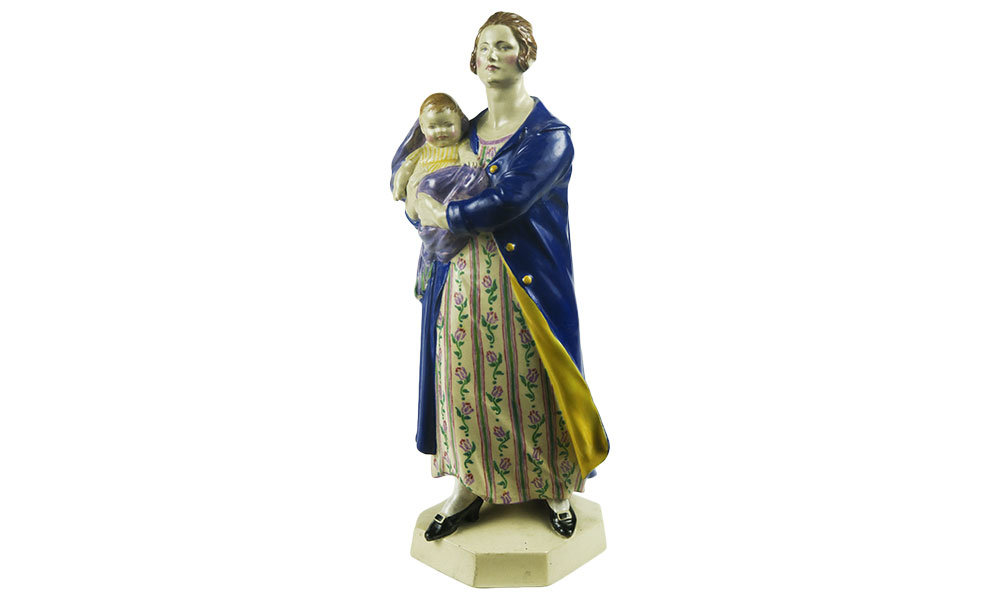
Madonna of World's End Passage by C. Vyse
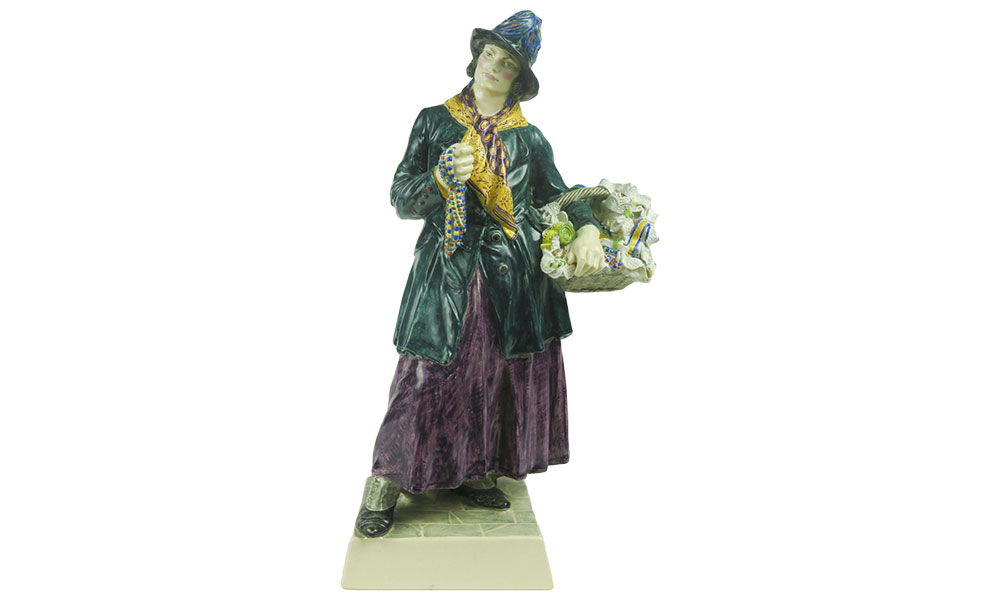
Pedlar by C. Vyse
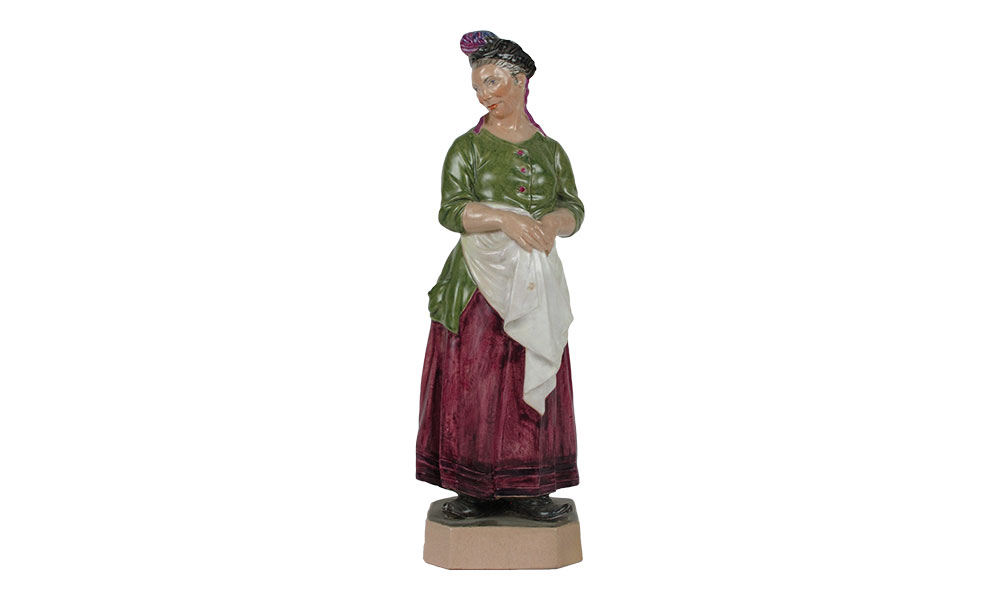
A Bit of Old Chelsea by C. Vyse
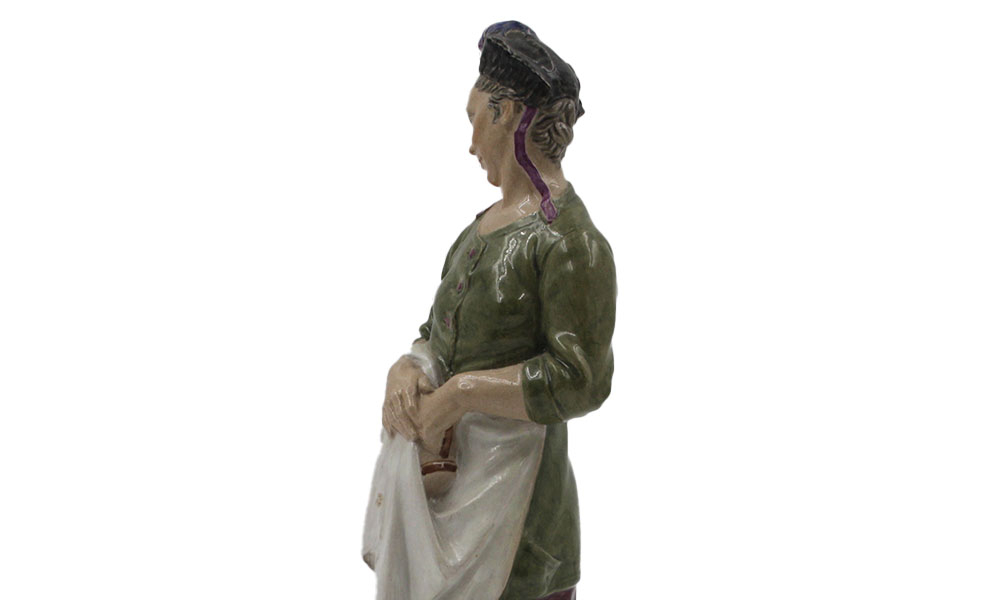
A Bit of Old Chelsea Detail by C. Vyse
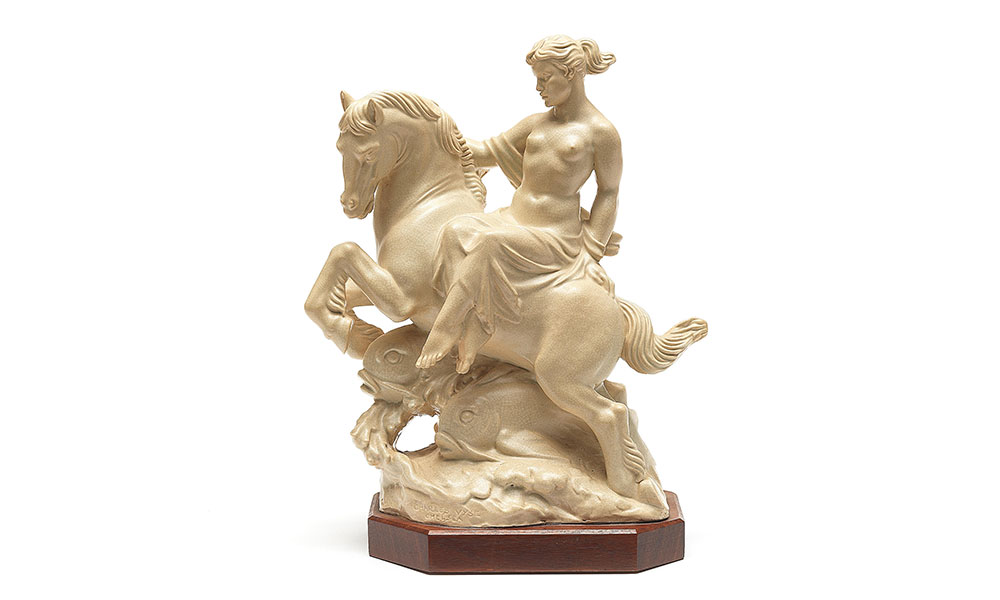
Woman on Horse by C. Vyse
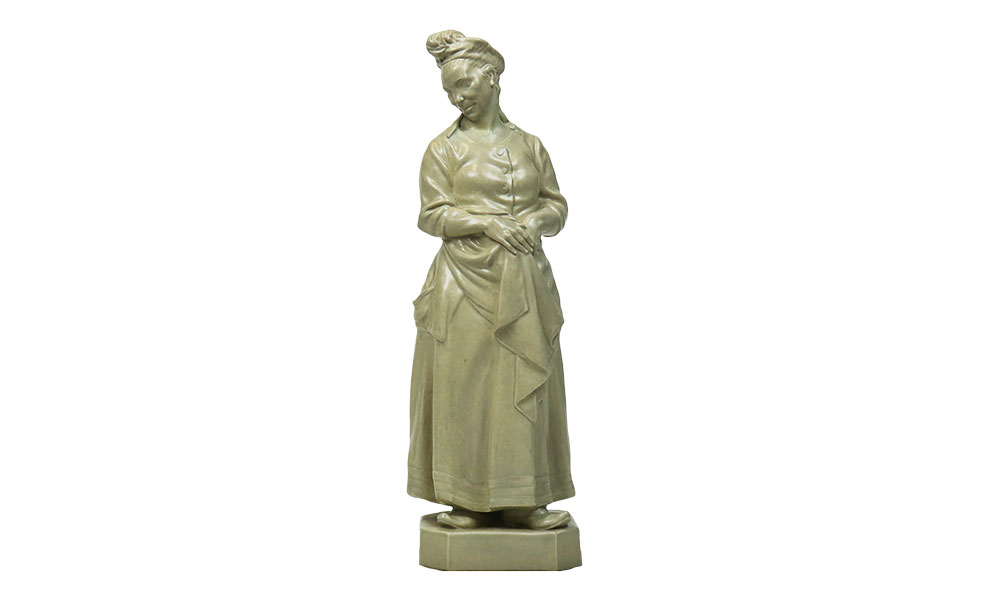
A Bit of Old Chelsea Ash Glaze by C. Vyse
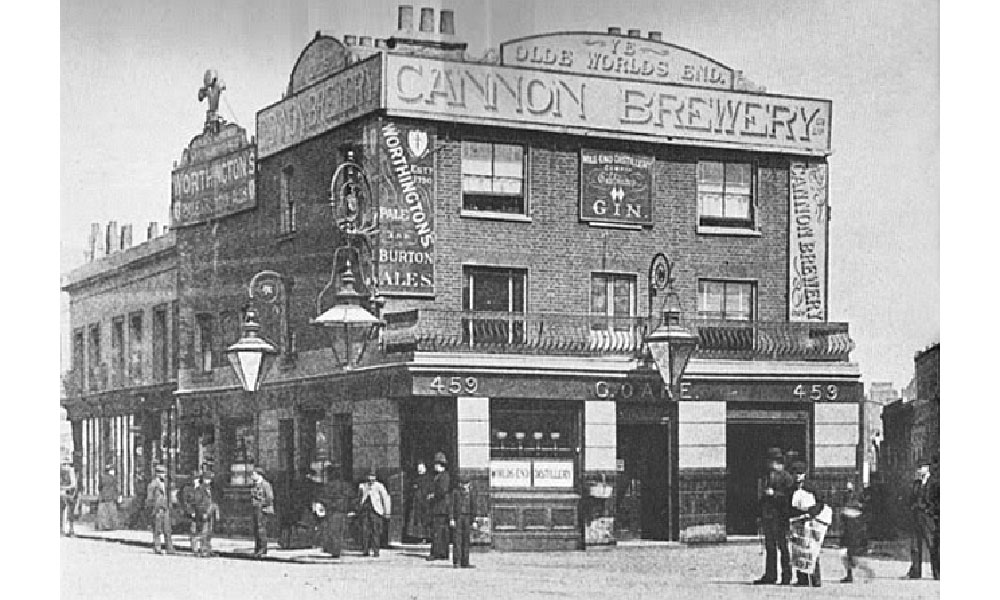
World's End Chelsea 1894
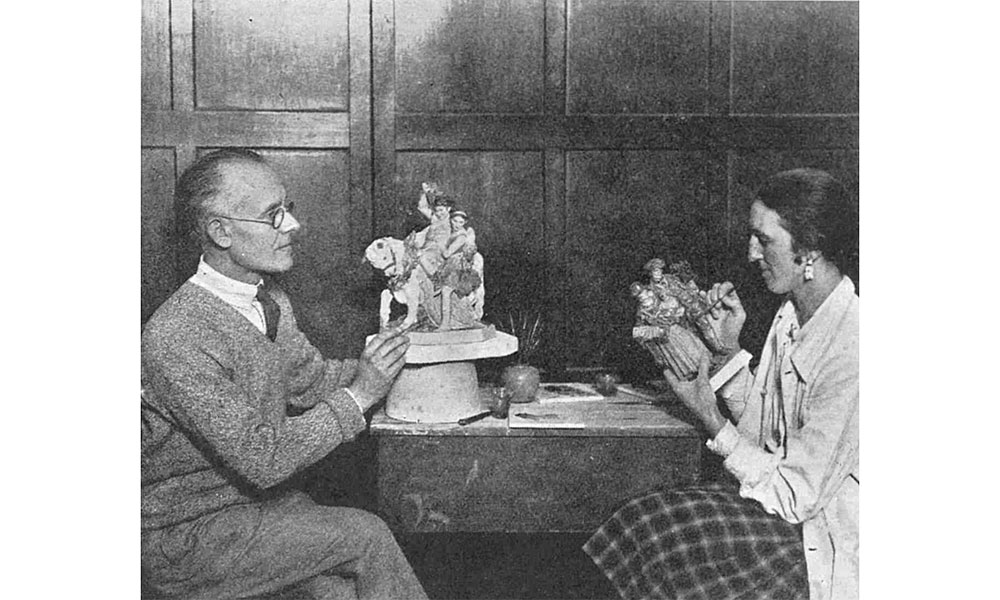
Vyse Studio by W. R. S. Stott
In a 1925 interview, she claimed, “To be a good potter, one must be an efficient cook, an excellent dressmaker, and an artistic designer, have a vast knowledge of chemistry, and be something of a navvy to undertake the waging of clay.”
Charles and Nell Vyse
Charles and Nell Vyse became famous for their figures of street vendors, gypsies and circus folk. Charles was an apprentice at Royal Doulton in Staffordshire and had modeled the first figures in their HN series, which was launched in 1913. After studying at the Royal College of Art in London, he embarked on a career as a sculptor but in 1919, he turned entirely to pottery making at his studio in Cheyne Row, Chelsea. Many of his subjects were drawn from the street life around Chelsea, such as his Madonna of World’s End Passage beside the famous pub landmark. A Bit of Old Chelsea depicts a cleaning lady holding a cup from the famous porcelain factory.
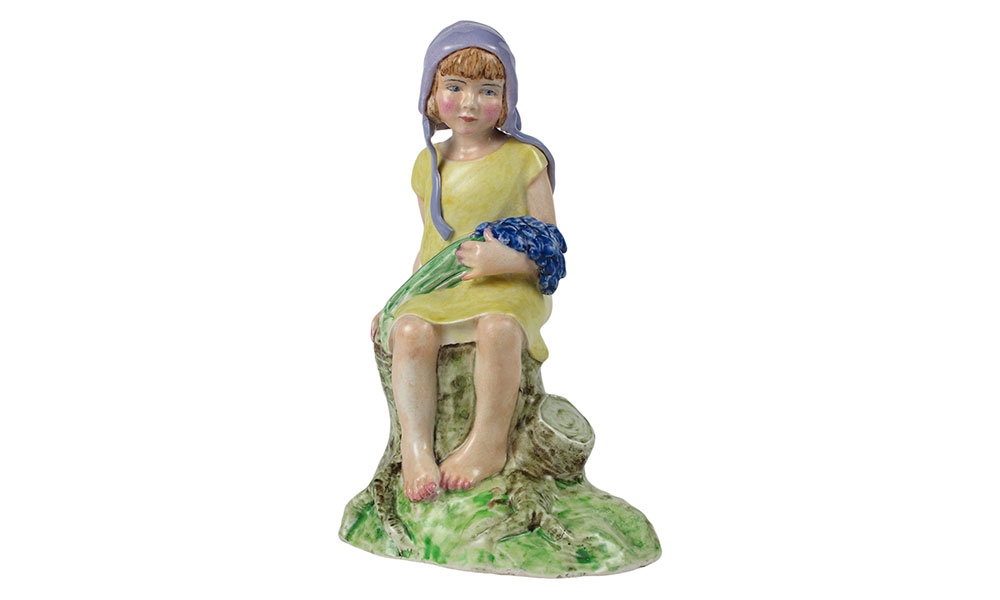
Old Cheyne Pottery
Ethel Sleigh and Phyllis Simpson
Confusingly, Ethel Sleigh and Phyllis Simpson called their studio the Old Cheyne Pottery although it was in South Kensington and previously known as Ranelagh. A 1922 newspaper article claimed that their Ranelagh China was much sought after by collectors and another promoted them as “delightful Christmas gifts.” They specialized in modeling pets and would visit a client’s home, wait for the dog or cat to assume a characteristic pose, and then make a model of it. They also made charming studies of children and figures of local characters, including the Chelsea Pensioners. Miss Sleigh died in 1928, and Phyllis continued to create figures until she married in the mid-1930s.
Thank you to Marshall Colman, Robert Prescott-Walker, Terry Cartlidge and David Lawrence for their informative research in this field.
Read more about Charles and Nell Vyse at WMODA
